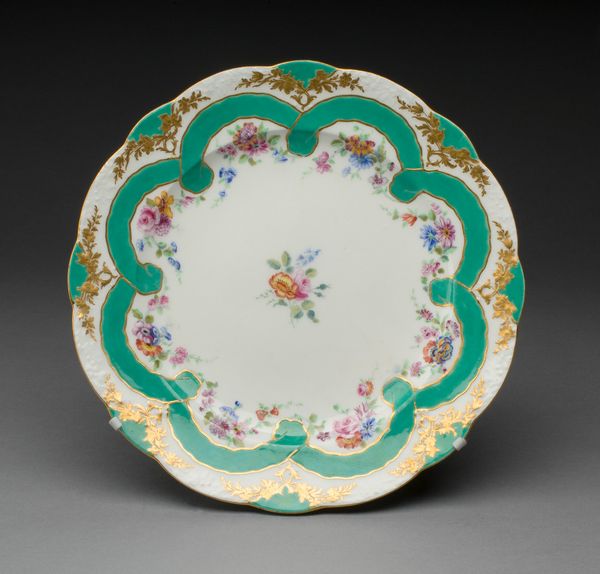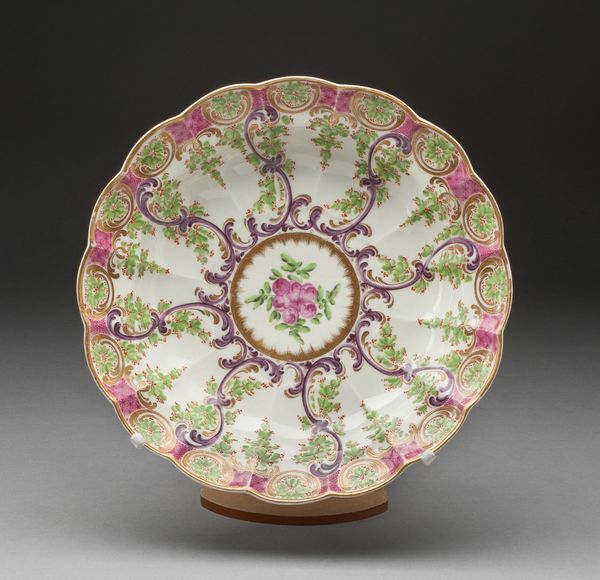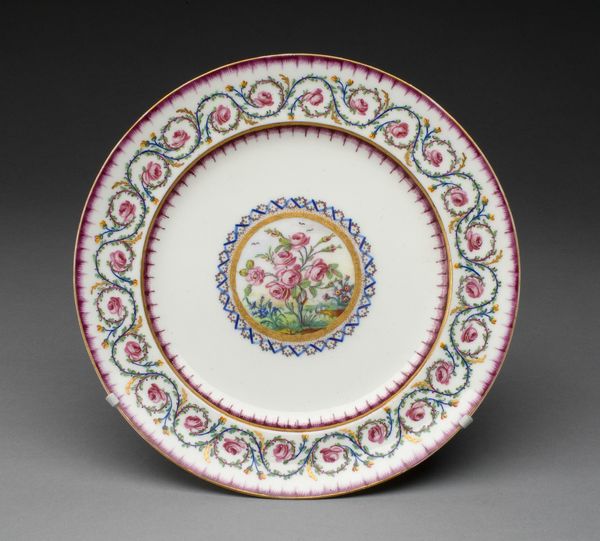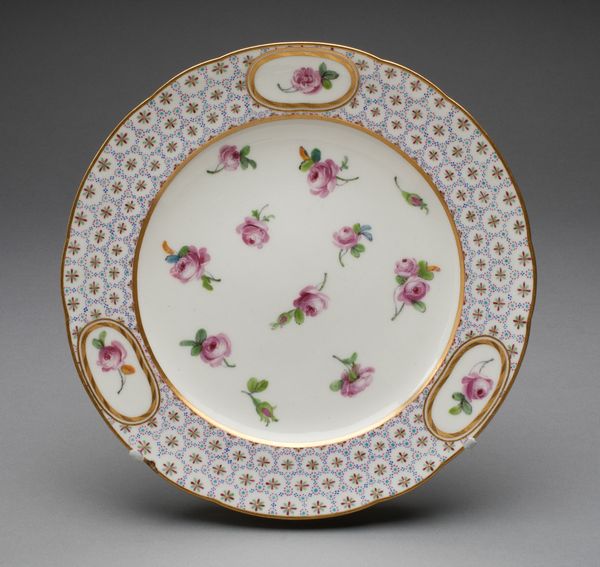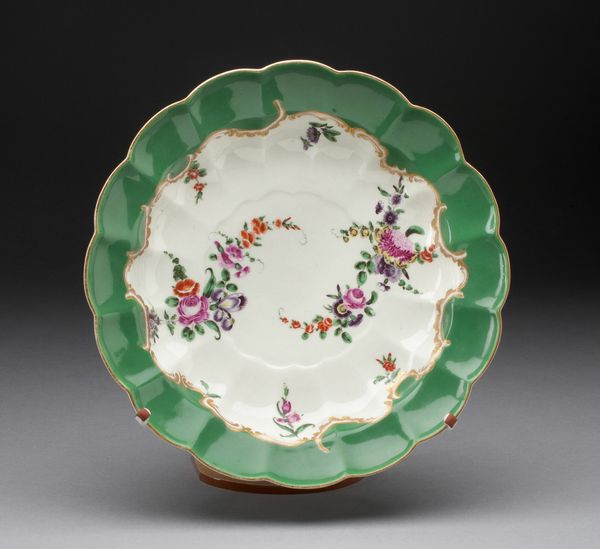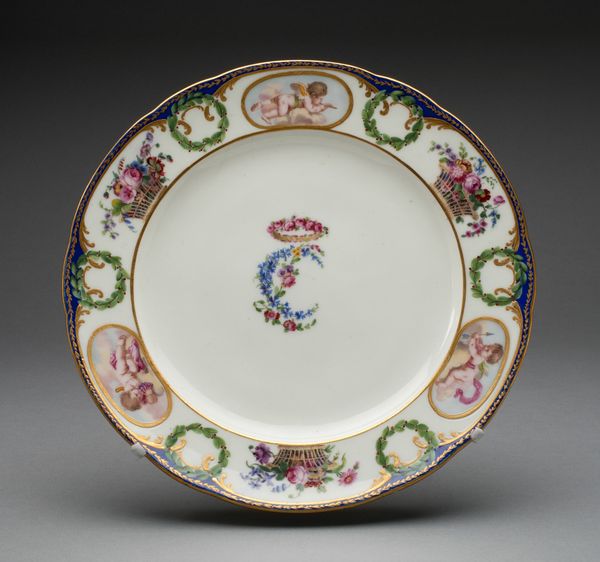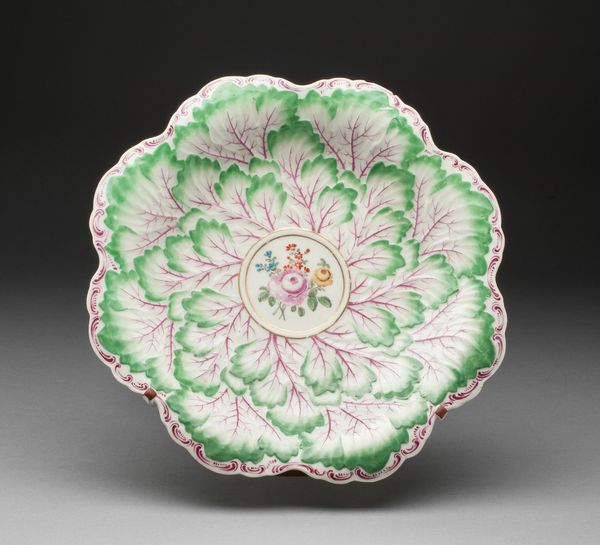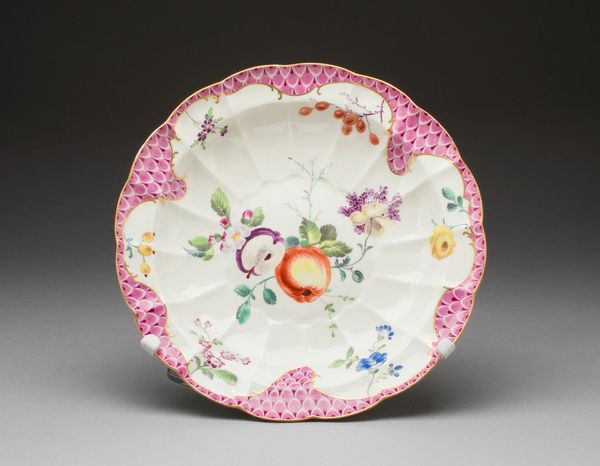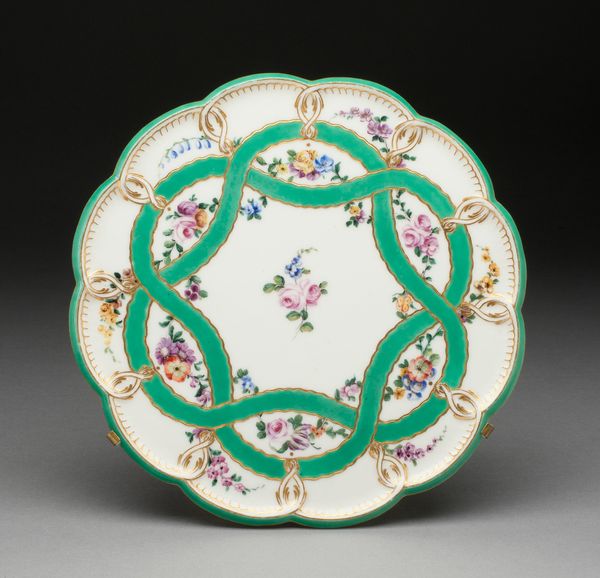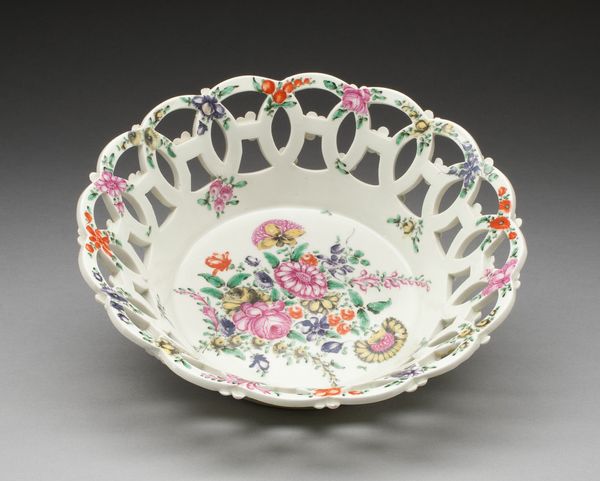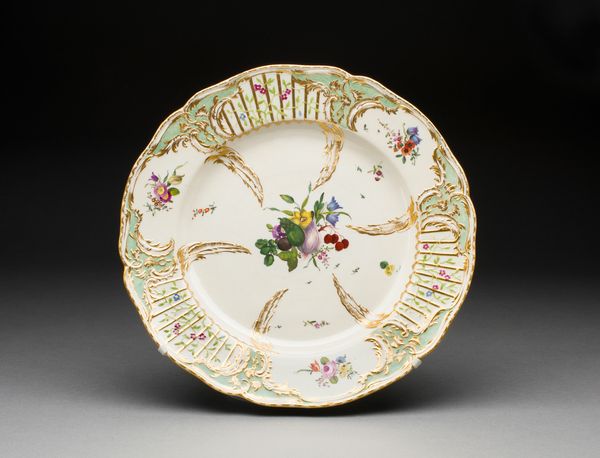
Dimensions: 9 × 29.8 × 24.8 cm (3 1/2 × 11 3/4 × 9 3/4 in.)
Copyright: Public Domain
Editor: So this is a porcelain "Pierced Dish" made by the Worcester Royal Porcelain Company around 1775. It strikes me how delicate it looks, especially with all those little perforations along the rim. What's your take on this piece? Curator: What grabs my attention immediately is the method of production and intended consumption. The Rococo style of decoration clearly caters to a specific wealthy consumer base, and speaks to its desire for luxurious display items. Note the pierced decoration around the rim: Each of those holes had to be meticulously cut and contributes little to functionality. Editor: That’s interesting. I was thinking about the functionality too, since it's a dish. But it feels more decorative than practical. How does that fit in? Curator: Precisely. This highlights the complex relationship between the artistic process and social value. Consider the labour involved in crafting this. The skilled craftsmanship in creating delicate porcelain and intricate pierced designs represents a significant investment of time and specialized skill. This object communicates social status through conspicuous displays of technique and material, intended to provoke envy as much as admiration. Editor: So the value is less in its use and more in showing off the skill it took to make it. Does the material itself, the porcelain, play into that? Curator: Absolutely. Porcelain, especially around 1775, was not simply a material, it was a signifier. Its inherent fragility and difficulty in production elevated it. Owning porcelain like this implied not only wealth but also access to global trade networks through which these materials traveled. Does thinking about these components of labour and social access impact your understanding? Editor: Definitely. I was just seeing a pretty dish, but now I see a story about wealth, skill, and even global trade embedded in the material and the making of it. It gives you a new appreciation for the object and how it was valued then.
Comments
No comments
Be the first to comment and join the conversation on the ultimate creative platform.
